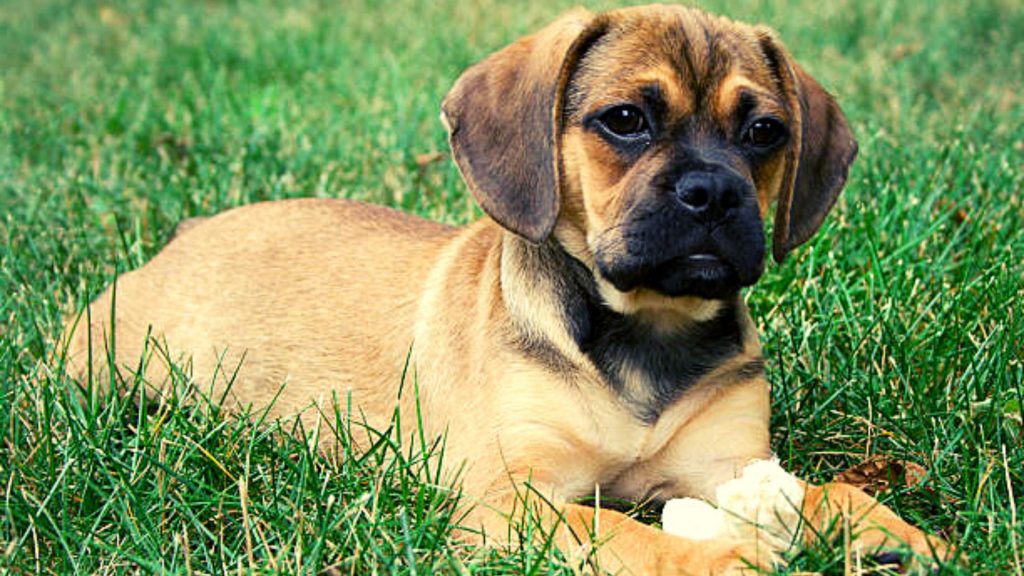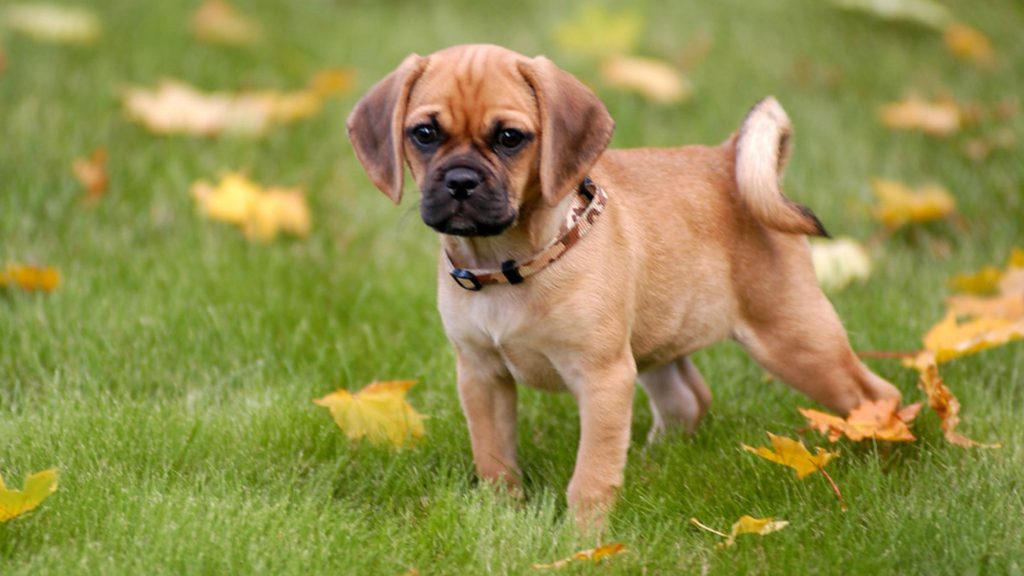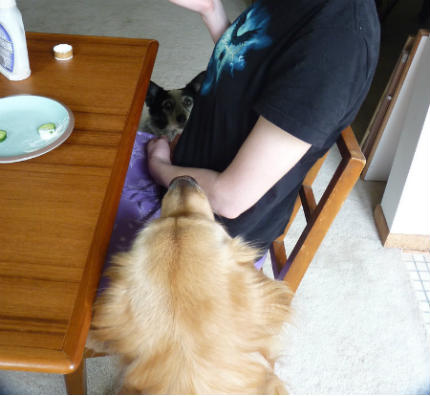In recent years, and if there were not already enough dog breeds, it has become fashionable to create new ones by hybridizing two existing ones, such as the puggle , which is already registered in some organizations in the United States. Joined.
- Size : from 20 to 38 cm
- Weight : between 7 and 14 kilos
- Hair type : short and straight
- Character : affectionate and intelligent. Very balanced
- Health : good, but prone to some diseases
- Life expectancy : 12 to 15 years
Origins of the Puggle
Although it is a very recent breed, the truth is that we do not have much data on the creation of the puggle, although we do know that the first record dates back to 1980, when Wallace Havens baptized the breed .
This occurred in Wisconsin, in the United States. This country is usually the cradle of these latest experiments with breeds with an uncertain future, since they do not have a standard and the FCI does not usually recognize them, nor do we believe it will do so in the medium term.
To obtain the breed (we will refer to the puggle in this way, although it is not) they were used in the beagle and the pug . Due to their difference in sizes, and in order for the birth to be simple, the female is a beagle and the male is a pug, otherwise the female pug would have a very difficult time giving birth.
Puggle Features
It is a small dog, which in this aspect is more similar to the pug than the beagle and whose size ranges from 20 to 38 cm, with a weight of between 7 to 14 kilos.
As we see, the size and weight data are variable and this depends on which genetics predominate, whether that of the beagle or the pug , so the puggle can resemble any of them.
Of course, the body is almost always that of the pug, very small, compact and with very short legs, with a snout that is either short or elongated, again depending on which of the two breeds it most resembles.
The hair is short and straight, dense, with black, lemon and white tones, brown with fawn, etc., although any mix is allowed when dealing with a mixed animal and being a puggle, a cross made between a beagle and a pug, whatever it may be. its result.
Its appearance is very similar to that of the small street dogs that have always existed in the towns of Spain, especially if the snout is more similar to that of a beagle than that of a pug.
When he has the pug's snout, the appearance is somewhat comical, especially the expression, since it seems that that face does not match that body.
Puggle Character
If there is something good about the puggle, it is its character, being a very affectionate and sociable animal , which is why it is suitable as a first dog, even if you do not have experience, as it will be a good school for any owner.
He can live with both adults and children, although he must always be accompanied, since he is very attached to his owners and does not tolerate loneliness well, at which time the dreaded separation anxiety may appear.
A trait that defines its character is adaptability, since it is not a demanding dog in this aspect. This means that you will live just as well with an elderly person in a small apartment in the city center as in a country house with many children.
He only needs affection to be happy and some exercise, which does not have to be very intense, which the puggle is not going to ask of us either, since several daily walks in the park are enough for him.
The only drawback that can be made is that he tends to bark excessively , something that will have to be worked on if we live in a building with neighbors, who will soon complain about this aspect.

Puggle Education
Puggle education should always be positive, as it makes no sense to use harsh methods or be very firm with such a small dog, although we must avoid overprotecting them.
It is a sensitive animal that immediately seems afraid or starts crying , something that should not make us overindulge it, and we will scold it when it touches like any other dog.
Its training is not complicated, since it is a very sociable animal and attached to its owner, in addition to being very smart. Thanks to this character, it will not be difficult for us to teach him basic obedience, things like coming to the call, sitting, lying down, staying still, etc.
We may have problems when training him so that he does not bark, so it is advisable to work with him from a very young age, giving him treats when he stops if we ask him to.
Here you will have to be patient, since it is difficult to lower the level of barking to an acceptable level . In any case, if we see that from a very young age he is already out of control in this aspect, we can turn to a professional trainer.
By working as the professional tells us and using some tricks, we will get him to bark less, which is important if we live in a flat or apartment and even less so if we live in a home in the countryside or in the town.
Puggle Health
Mixed-breed dogs always have better health than pure breeds due to genetics, but when two breeds are mixed, as has been done to create the puggle, there is a risk that the result will be prone to inheriting diseases. of each of their parents.
This happens in the puggle, which usually suffers from skin diseases such as allergies, dermatitis or fungi , so it will be necessary to check its skin often and go to the vet if any symptoms occur, because if it is detected early it is easier to stop the problem. .
Otitis and conjunctivitis (the latter coming from the pug) are not rare, although they can be prevented if we clean both the ears and the eyes, checking the inside of the ears daily and notifying the veterinarian if we notice that the eyes are very red or They cry more than normal.
If it has the pug's head, it may suffer from disorders that brachycephalic specimens have, such as asthma or various respiratory system problems .
All these diseases should not scare us, since puggles are prone to them, but this does not mean that they will suffer from them all. In addition, they are less likely to experience them than pugs or beagles, and some, such as conjunctivitis or allergies, are normal in many dogs.
In fact, with proper veterinary care, the same as that given to other breeds, it is not uncommon for them to reach 15 years of age, something that few dogs can say.
Puggle Care
All puggle care is quite simple, starting with the coat, which will be in very good condition with weekly brushing, without requiring further attention.
Like any small dog, and in order to avoid digestive problems , it is best to give it a quality feed specific to these animals, with small kibble , which makes it easier for them to chew and digest it.
Before we said that he was prone to conjunctivitis and otitis, some of which can be prevented by cleaning his eyes and ears, inside, with saline solution several times a week, or with specific products sold for this purpose.
Finally, it is not a dog that can be alone for a long time , otherwise it will have anxiety, so we must ensure that it spends as much time accompanied as possible, as it is not the ideal dog for those people who are away from home all day.

Adopt a Puggle
The puggle is another of those breeds that is very complicated to adopt, since there are few around the world and it is possible that there are none in Spain .
Yes, it will be easier to adopt a pug and especially a beagle, a larger breed that is more often abandoned or left in shelters, especially those that come from hunters.
In the event that we decide on a pug, we must know that they are delicate animals, so it is advisable to always have money reserved to be able to take it to the vet with peace of mind.
Other small dog breeds that may interest you:












